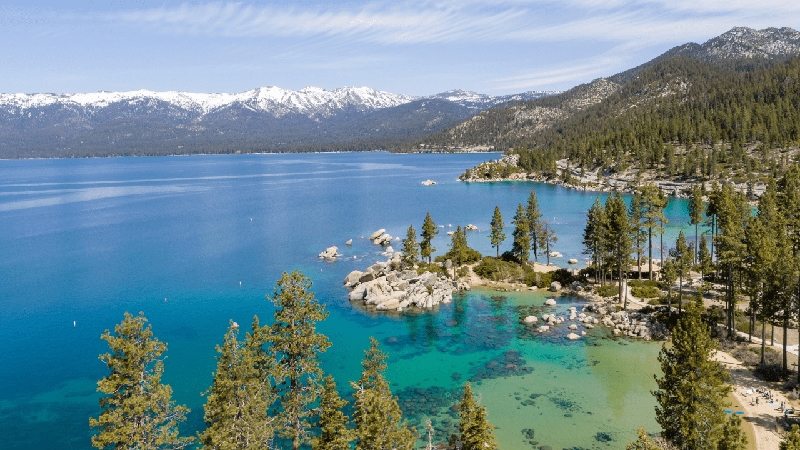
For Lake Tahoe residents: The UC Davis Tahoe Environmental Research Center (TERC) will discuss its just released 2023 Tahoe: State of the Lake Report on today, Thursday, July 20, in the conference room at Granlibakken Tahoe, 725 Granlibakken Rd, Tahoe City. The reception with refreshmants and a no-host bar commences at 5pm; the lecture begins at 6pm.
The 2023 Tahoe: State of the Lake Report, released by UC Davis Tahoe Environmental Research Center (TERC), reveals significant changes in Lake Tahoe's ecosystem. The report, based on data collected in 2022, highlights unprecedented biological shifts and serves as a vital resource for restoration, management, and monitoring decisions.
Researchers observed rapid changes in the lake, including alterations in lake clarity and a notable decline in the Mysis shrimp population. Extensive algal blooms in the lake's nearshore regions and the presence of microplastics were also documented. The report covers various subjects, such as new monitoring and modeling efforts, reduced nitrogen and phosphorus levels, and investigations into the effectiveness of no wake zones.
A crucial finding was the substantial improvement in lake clarity from August to December, the best measured since the 1980s. This improvement was preceded by a collapse in the population of Mysis shrimp, an introduced species, and other changes in the lake's native phytoplankton and zooplankton.
The report emphasizes the need for a better understanding of the complex processes occurring in the lake, prompting the installation of an acoustic doppler current profiler on the lake's west side to track the expected resurgence of Mysis shrimp.
On a positive note, restoration and management efforts have succeeded in reducing nutrient and fine particle loads entering the lake. Nitrogen levels from the Upper Truckee River, the primary water source, were significantly lower than previous years. However, the report also notes fluctuations in algal populations and photosynthesis rates due to changing water levels and temperatures, leading to increased presence of Cyanobacteria and attached algae, which affected approximately 16 miles of beach with decaying algae washing up on the shore.
The report signals the lake's ongoing ecological changes, urging further research and monitoring to ensure its long-term health and sustainability.
Read more “Clarity, Changing Food Web Detailed in Annual Lake Tahoe Report” on YubaNet.